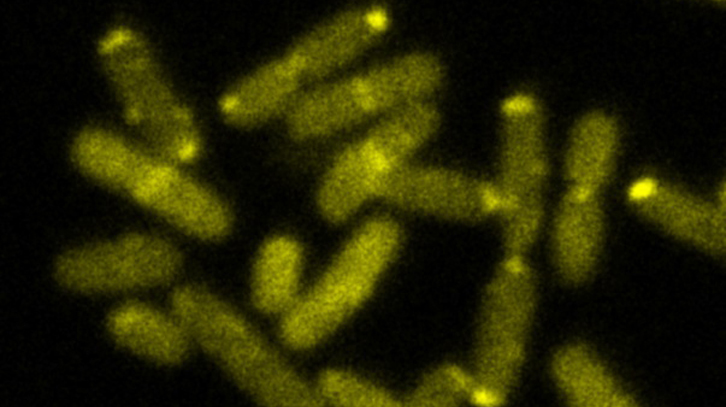Discovery of mechanism that enables bacteria to elude antibiotics

The Molecular Microbiology Research Group in the UAB's Department of Genetics and Microbiology have determined that alteration of the equilibrium between two proteins of Salmonella enterica in the presence of antibiotics leads to the disorganisation of the structures that allow the population to spread, which in turn stops the progress of the cells in the bacterial colony that are nearest to harmful concentrations of antibiotic, while the rest spread into areas with lower concentrations.
Bacterial populations move over surfaces in coordinated way known as swarming, which allows them to spread further over organs and tissues and increases the virulence of the infection. This movement is driven by the action of the flagella and the chemoreceptors, the systems responsible for identifying chemical compounds in the environment and which are anchored at the poles of their cells, forming highly organised structures, of which the protein CheW forms part.
The researchers have shown that activation of the SOS system, a cellular response in the bacteria in the presence of antibiotics, causes an increase in the concentration of the protein RecA, which interferes with the distribution of the CheW protein by altering the organisation of the chemoreceptors and stopping the swarming movement.
The imbalance between the concentrations of these two proteins makes the bacterial colony avoid any areas of the surface they are colonising that present harmful concentrations of antibiotic, stopping the swarming movement in the regions nearest to the drug and allowing the colonization of the rest of the area.
The molecular balance between the RecA and CheW proteins is therefore seen to be crucial to the organisation of the chemoreceptors in the cells of the bacteria and so to their colonising movement.
|
|
|
| Figure 1: Model of the behaviour of a bacterial colony of Salmonella enterica due to the presence of antibiotics. |
In the words of the researchers, the results show clearly that the bacterial populations move over the surfaces using specific mechanisms like that described in this work, in order to avoid contact with the compounds that damage their DNA.
Salmonella enterica is member of a bacterial group that includes several pathogenic species responsible for diseases in the digestive and respiratory system, such as septicaemia and systemic infections.
The work opens the door to the design of new compounds that can neutralise this bacterial strategy, which reduces the efficiency of treatment with antibiotics.
Jordi Barbé
Department of Genetics and Microbiology
Susana.Campoy@uab.cat, Jordi.Barbe@uab.cat
References
Irazoki, O.; Mayola, A.; Campoy, S.; Barbé, J. SOS System Induction Inhibits the Assembly of Chemoreceptor Signaling Clusters in Salmonella enterica. PLoS ONE. 2016, vol. 11, num. 1, e0146685. doi: 10.1371/journal.pone.0146685.


